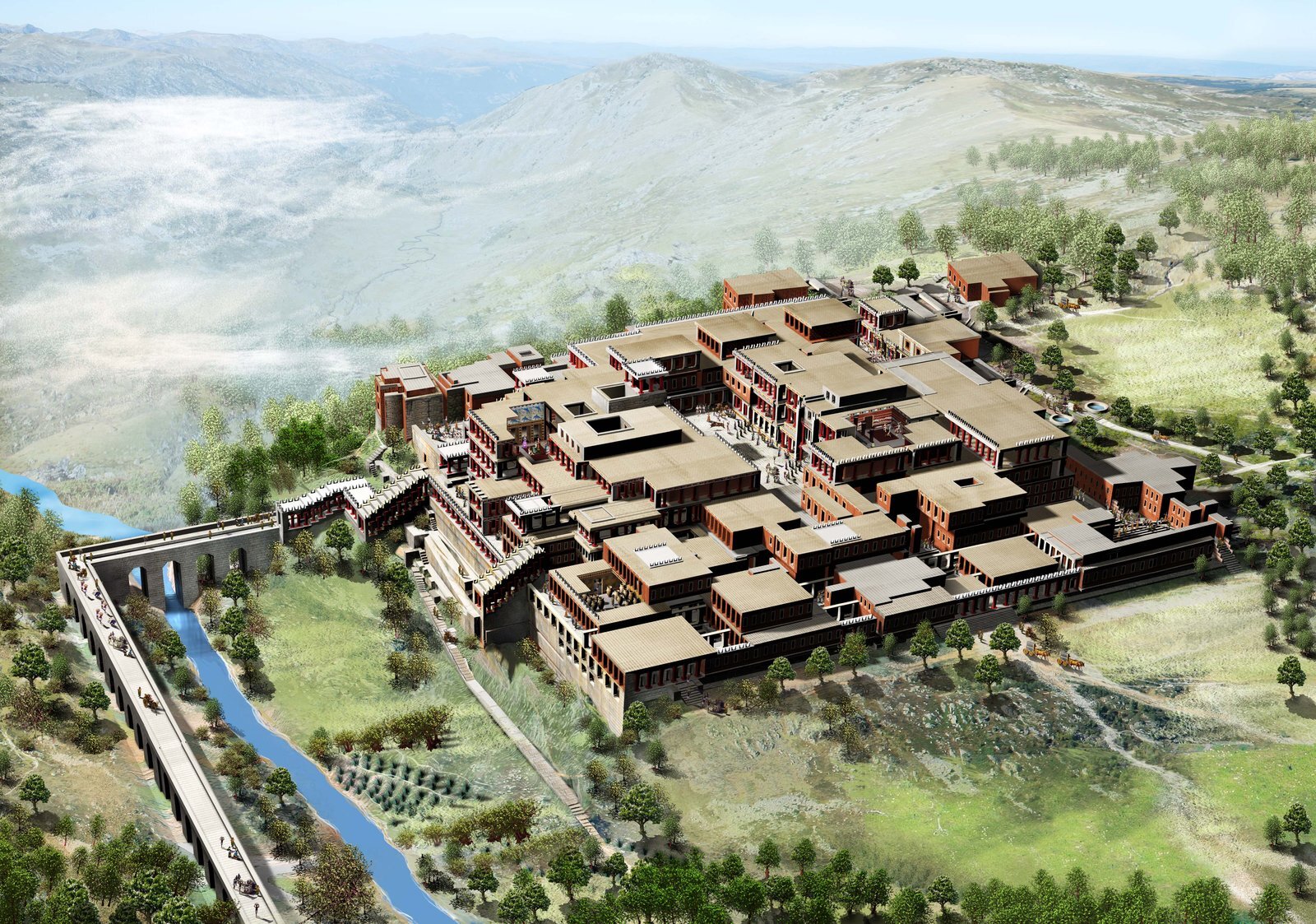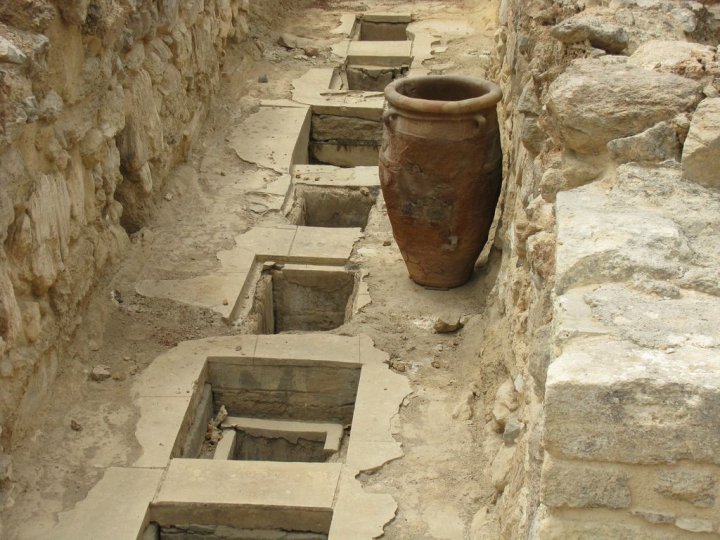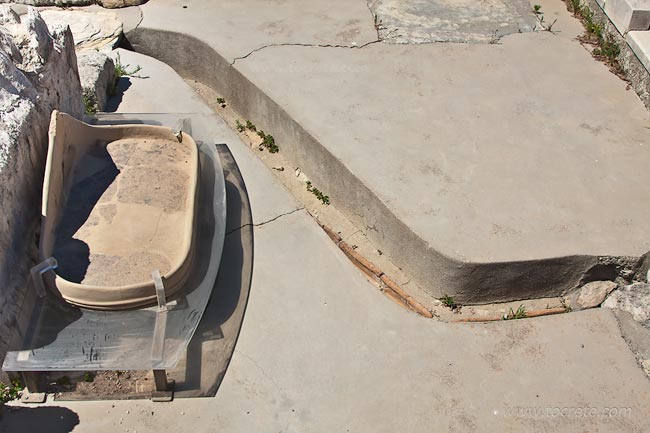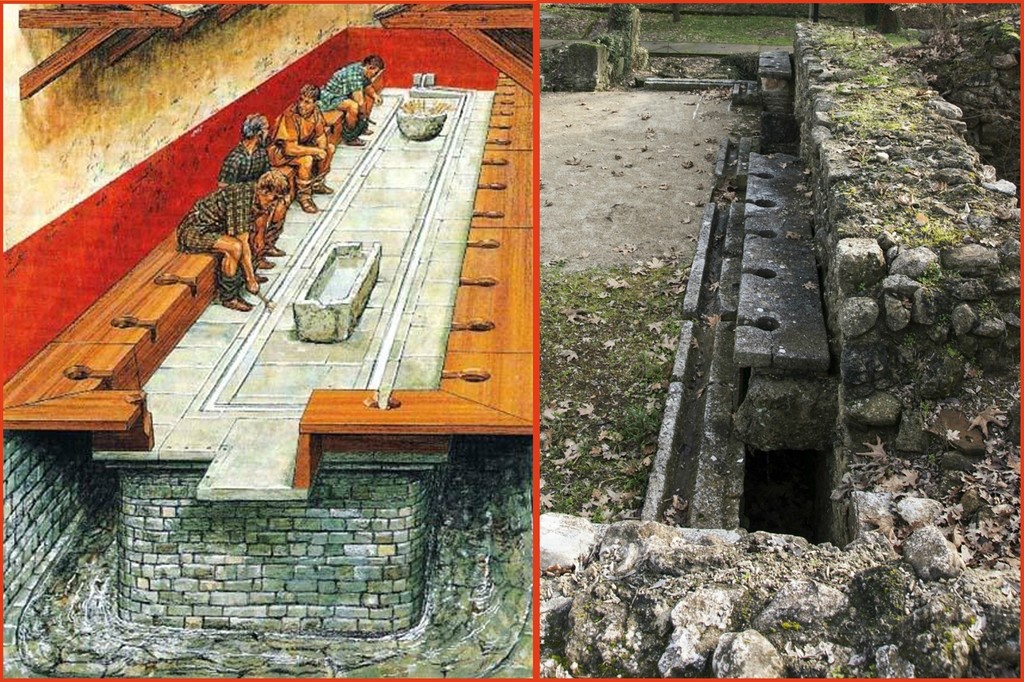Crete, the birthplace of cleanliness and hygiene


Сlean water supply, sewage and sewerage are three most important pillars of human progress.
It is difficult for modern people, especially urban residents, spoiled by benefits of technological progress, to take this statement seriously. However, for many people living away from civilization, this is true.
In the Human Development Report 2006 “Beyond scarcity: power, poverty and the global water crisis”, prepared by an international group of experts under the auspices of the UN, the root causes and consequences of the global water crisis were considered and founded that 1.2 billion people do not have access to clean water currently, and 2.6 billion to basic sewage systems. The report proves that the basis of this situation is not limited water resources, but non-optimal political decisions, poverty and inequality. It seems that even the authors of the report themselves were discouraged: “It seems implausible that the toilets can be a catalyst for the progress of human development…”
The history of sewage facilities and toilets dates back more than 5000 years. In many places where ancient civilizations originated, people involved in agriculture, due to the arid climate, began to build canal systems for irrigation, some of which were subsequently converted and used for domestic water supply, and as sewers because of population growth in cities.
During excavations in the Orkney Islands, off the coast of Scotland, archaeologists discovered in the stone walls of the houses indentations connected to the gutters. These are latrines whose age dates back to the Neolithic, and today they are considered the most ancient. Slightly younger than them are public toilets, as well as the urban sewage system, which were discovered in the cities of Indian (or Harappa) civilization (about 3000 BC). Sewer structures were found in ancient Babylon, one of the first megacities in the history of mankind.

Minoan Palace of Knossos in Crete, built around 2000 BC, is perhaps one of the first applications of such engineering and architectural achievements as high-rise buildings, natural and artificial lighting, water supply, sewage, ventilation, heating as well as paved roads. Many of the palace rooms were equipped with bathrooms and comfortable flush toilets that looked like a stone toilet, to which water was supplied using a complex pipe system. Water flowed into Knossos through pipes from fairly remote places on the island. The water supply branched inside the palace and the settlement, which was located nearby. Two runoffs with masonry—for sewerage and rainwater drainage—were in Knossos and brought the water out, outside the palace. Fragments of this sewer system are perfectly preserved to this day, and attentive tourists can see neat rectangular grooves laid along the foundations of the walls of the palace.
Of course, the bathrooms and toilets of the ancient Knossos palace were a rarity and a privilege of the rulers. The vast majority of the Cretan population relived themselves “in nature”.
The experience of the Minoan civilization did not disappear without a trace. The history of the development of water supply, sewage and toilets continued in ancient Greece, and then in ancient Rome. In some well-to-do families, closet toilets were made on the second floor. Sewage from them was collected and discharged with the help of large special vessels into sewage. The poor used ordinary pots.

People get used to the good things quickly. The appearance of toilets required the creation and modification of sewage systems. In Athens already in the V century BC, water and sewage were diverted from the areas using a special canal 1 m deep and wide. In other cities, open canals or drains were closed by slabs. In ancient Rome, public toilets first appeared on streets and in public baths. They looked presentable with marble and ceramics. The “contents” fell into drains under the seats, from which they were then washed with running water through a system of pipes into special collectors – cesspools. In the novel “Les Miserables”, V. Hugo wrote: “The history of mankind is born in the history of cesspool. Cloaca is the conscience of the city. ” The most famous of these cesspools in Rome is Cloaca Maxima. This large enclosed tunnel, which has survived to this day, was held in Rome around 500 BC. In ancient Rome, the sewer system was a complex engineering structure. During its construction, the terrain was taken into account: water in ancient aqueducts is not pumped, but moves by gravity, rising to a height, from where it then flowed down. The length of the longest main water supply system in Rome is 91 kilometers. Thanks to aqueducts, the population of the city is growing and reaches almost a million people by the beginning of our era. The longest Roman aqueduct was built in the II century to supply water to Carthage (in the territory of modern Tunisia). Its length was 141 kilometers, and the population of the city was 300 thousand, although before the conquest by the Romans it was much larger: it reached a million earlier than in Rome. This aqueduct was surpassed by another one that supplied water for 600 thousand inhabitants of Constantinople by the beginning of the Middle Age. Its length exceeded 150 km, and today is amazing its underground water supply system consisting of interconnected cisterns. One of them is open to tourists visiting the city center, and until recently it was officially called by the Turks a Palace that went underground (Yerebaran sarayı).
The aqueducts were arched bridges over which water was transported through valleys and lowlands. They can be observed today. In addition to them, there were stone pipelines, through which water could overcome ascents, and intermediate pools. Moreover, aqueducts sometimes had “humps” that raised the flow of water above the horizontal. Here it was divided into 3 pipes to prevent the transfusion of water from the aqueduct. The pipelines consisted of tightly fitted stone blocks, inside which there was a hole with a diameter of 30 centimeters. The inventor of the system Vitruvius, who lived in the 1st century BC, mentions in his work on the construction of aqueducts the incomprehensible term colliquiaria. According to German researchers on this issue, he had in mind small holes with a diameter of 3 centimeters, made in some places of the stone pipeline: water is an incompressible substance and thus managed to reduce pressure, release some of the air and slow down its flow. Another way to slow it down was to make deliberately rough the walls of the water stream’s bed. All this prevented the appearance of waves on the aqueduct when the pools were opened to fill.

Excavations of Roman military field camps show that they attached great importance to sanitary facilities. A canal of running water was brought to the public toilet of the legionnaires: the camp was built taking into account water presence. Drinking water was used from a separate source. Pretoria—the commander tent of the legion and its very location—had a private toilet. At the “first line” (via principalis), a bathhouse was with its own toilet. They were also built by Romans within their stationary fortifications: in castras.
After barbaric invasions and the collapse of the Roman Empire, much was lost, including the principles of urban sanitation. The sewage and water supply systems built by the Romans in their cities and in the conquered territories were destroyed, and new ones were rarely in the Middle Age. People of the time were not too picky about sanitation and hygiene: they used an ordinary pot placed under bed and poured its contents right on the street.
A typical “sewage” of the medieval city was a cobbled street, along which sewage flowed in streams. The necessary slope for the runoff was rarely observed, because of which the waste stagnated and decomposed directly on the streets. The latrines were wooden or stone cesspools without a paved bottom, which led to the infection of groundwater and soil. It was the lack of sewage that led to epidemics claimed thousands and thousands of lives.
In medieval castles the situation was better. In each of them several latrines were created: bay windows, ledges (like peculiar machicolations) were used as “secret chambers”. The seat was a stone slab with a round hole. The “secret chamber” of the castle owner’s family may be also in a fireplace mine, cozy and warm. All sewage flowed down vertical pipes into the moat. Regularly, both such structures in the castle and the moat were cleaned. The lord and his wife prudently left the castle while it was cleaned and aired.
Therefore, in the engineering sense, the ancient Knossos palace was undoubtedly thought out and built more functionally than many of its medieval “brothers”: for example, Versailles, the residence of French kings. In Versailles, several millennia after the disappearance of the Minoan civilization, there was not a single room for a toilet with a flush.
However, in the Middle Age in Russia, you can find examples of engineering solutions for removing human waste products. In Novgorod, in the Yaroslavl yard, wooden drainage channels of the 12th century and a drainage channel of the 14th century were discovered during excavations. The Piskarevsky Chronicle, written in 1612–1615 by an unknown person, tells about an underground water supply to the Moscow Kremlin.
In the Middle Age, the water supply of the cities in Europe, Russia and other regions could not be compared to the water supply of the Ancient Rome, which had a powerful economy. Centralized water supply systems were absent. As sources of water supply were used rivers, open reservoirs, wells and springs. Water was delivered to cities in barrels or cisterns for a fee. Since the beginning of the industrialization process and the rapid growth of cities, this situation could not last long.
After a long period of stagnation up to the 17th century, mankind continued to exist in a sea of its own sewage, which inevitably led to outbreaks of cholera, plague and other epidemics, which mowed up to half the population. Only then did people think about the connection between hygiene and disease. In the cities, the Roman type of water supply and sewage systems was recreated.
First attested in English in 1676, the word hygiene comes from French one borrowed from ancient Greek religion, where Hygeia, the daughter of Asclepius (a god of medicine), was the personification of health, cleanliness, and hygiene.
Prepared by Victor Dubrovskiy, Oleg Loginov